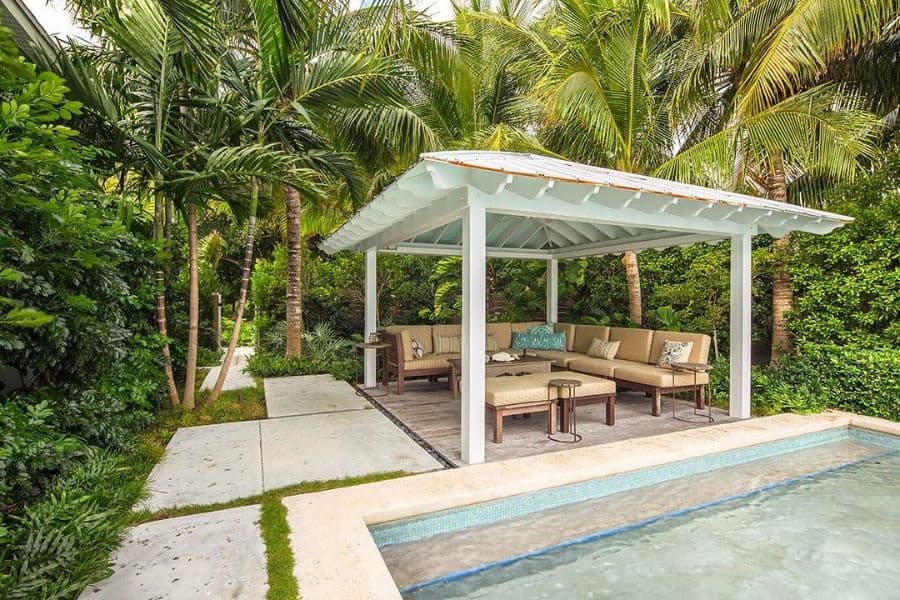
9 Backyard Outdoor Pavilion Ideas
Wouldn’t it be nice if you had a shady spot to relax in your backyard? A pavilion will give you a covered and protected place that you can turn into a backyard retreat. It will give you more shade and protection than a pergola or gazebo. This protected space will become your favorite place for lounging, relaxing, entertaining, eating, or just hanging out.
These backyard pavilion ideas will help you get started building a pavilion in your backyard.
1. Pavilion With a Privacy Wall
Transform your backyard into a secluded retreat with a pavilion featuring a privacy wall. This design not only provides a sheltered space for relaxation but also adds an element of intimacy, ideal for quiet afternoons or small gatherings. Use materials like cedar or stone for a natural look, and consider incorporating climbing plants for a touch of greenery. This pavilion style is perfect for those seeking a peaceful outdoor haven.
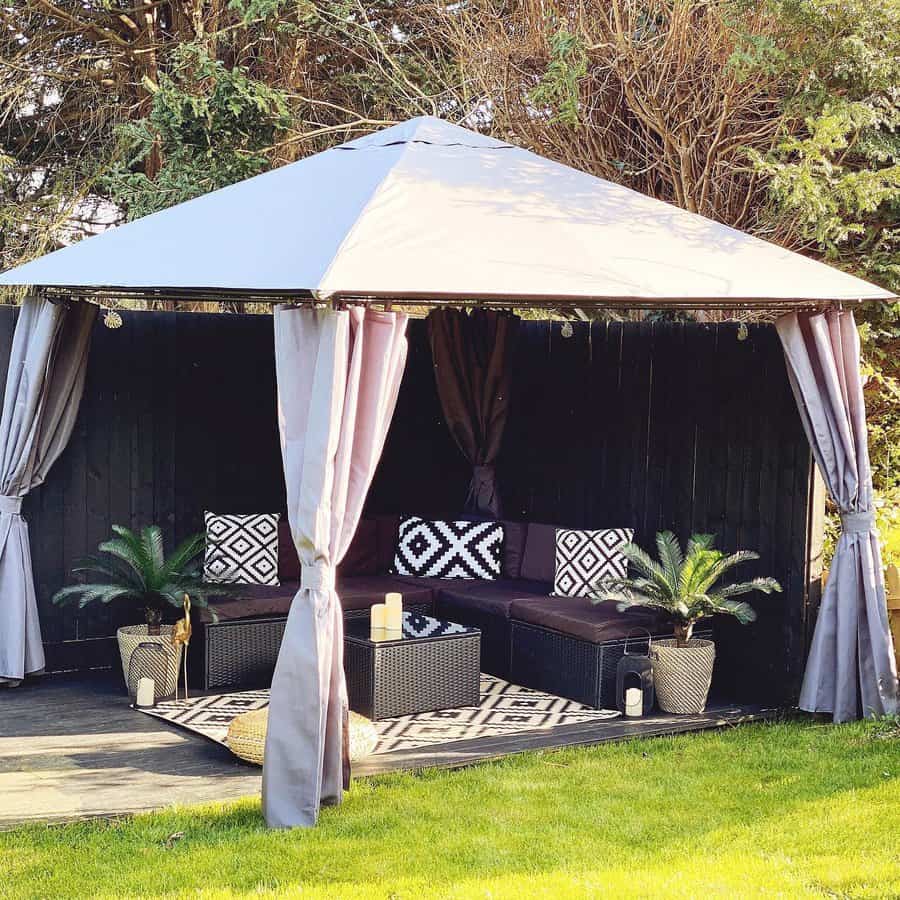
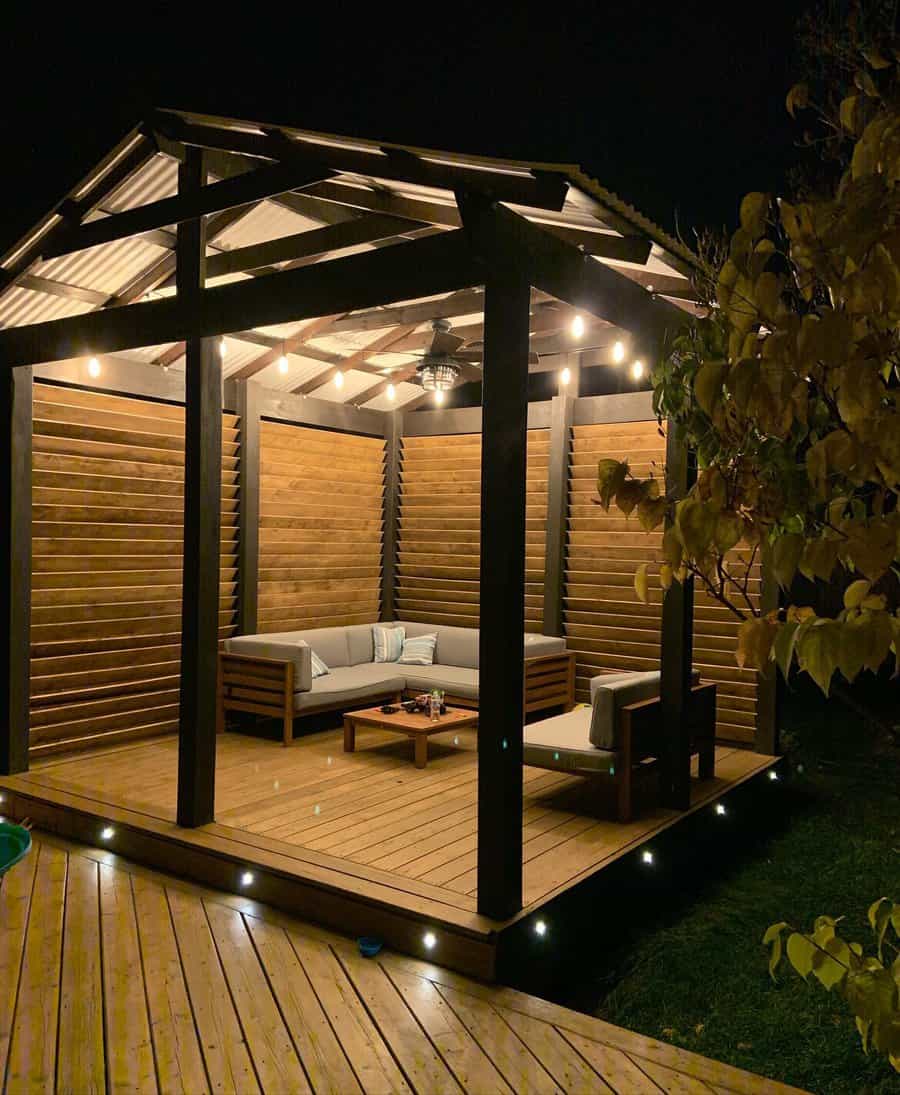
2. Small Steel Pavilion
A small steel pavilion is a sleek, modern addition to any backyard. Its durable structure withstands the elements, while its minimalist design creates an open, airy feel. Ideal for compact spaces, this pavilion can serve as a focal point for your garden, offering a stylish spot for outdoor dining or lounging. Accessorize with bold, contemporary furniture to complete the look.
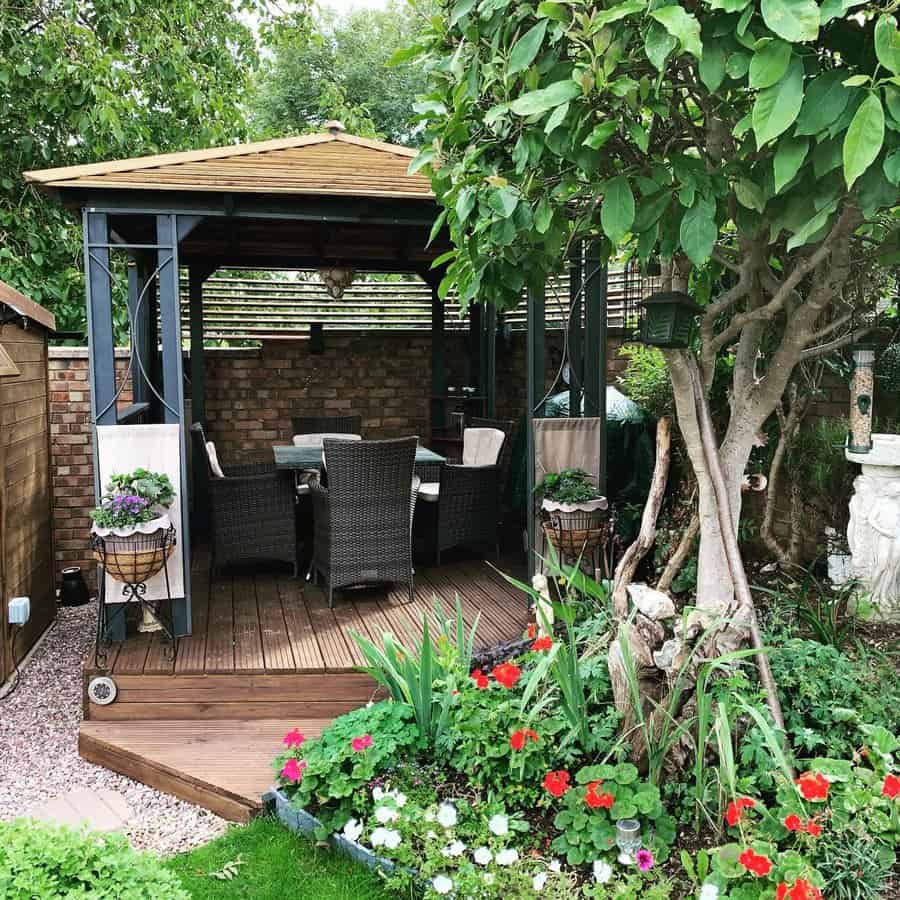
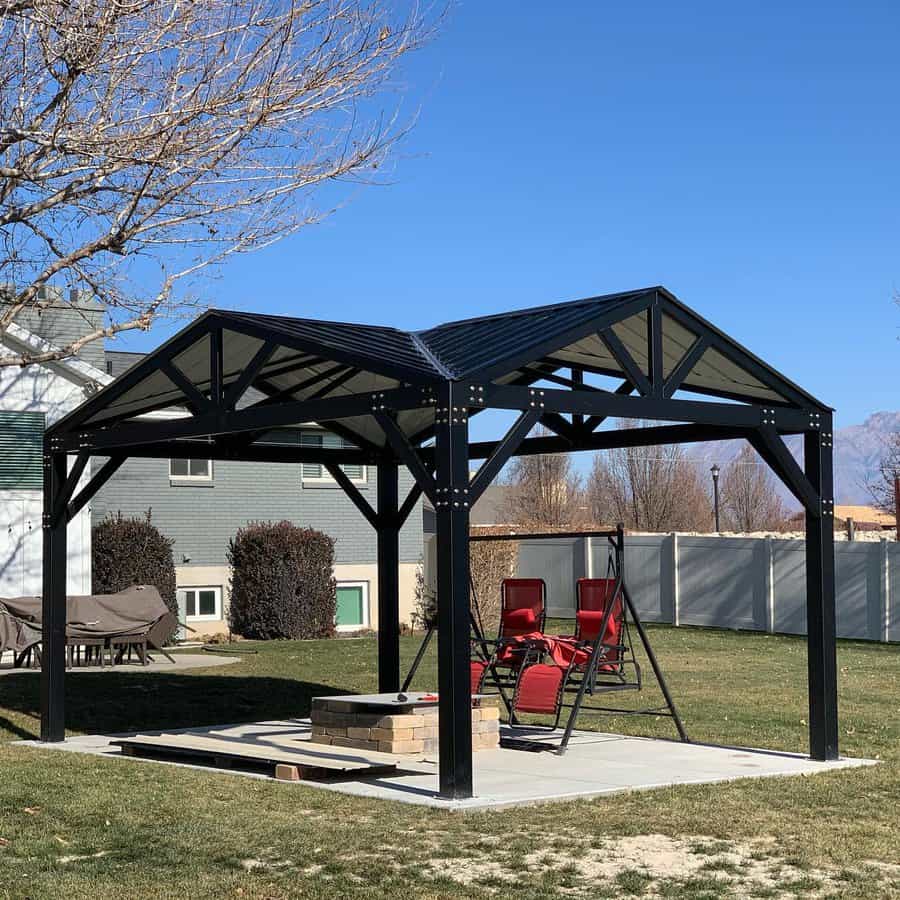
3. Frosted Glass Pavilion
The frosted glass pavilion is the epitome of modern elegance. The translucent walls provide privacy while still allowing natural light to filter through, creating a bright, serene environment. This design is perfect for those who love to blend indoor comfort with outdoor beauty. Pair it with sleek, simple furnishings and ambient lighting for a stunning effect.
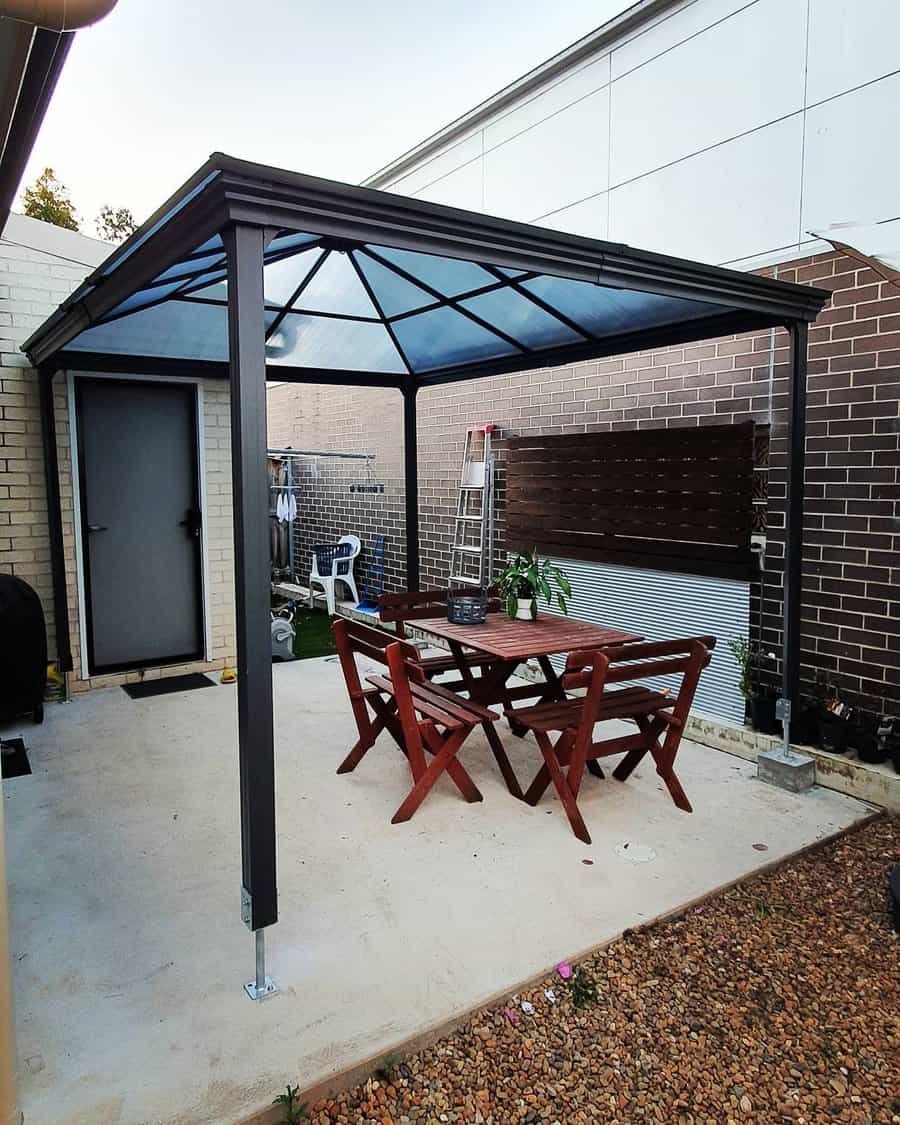
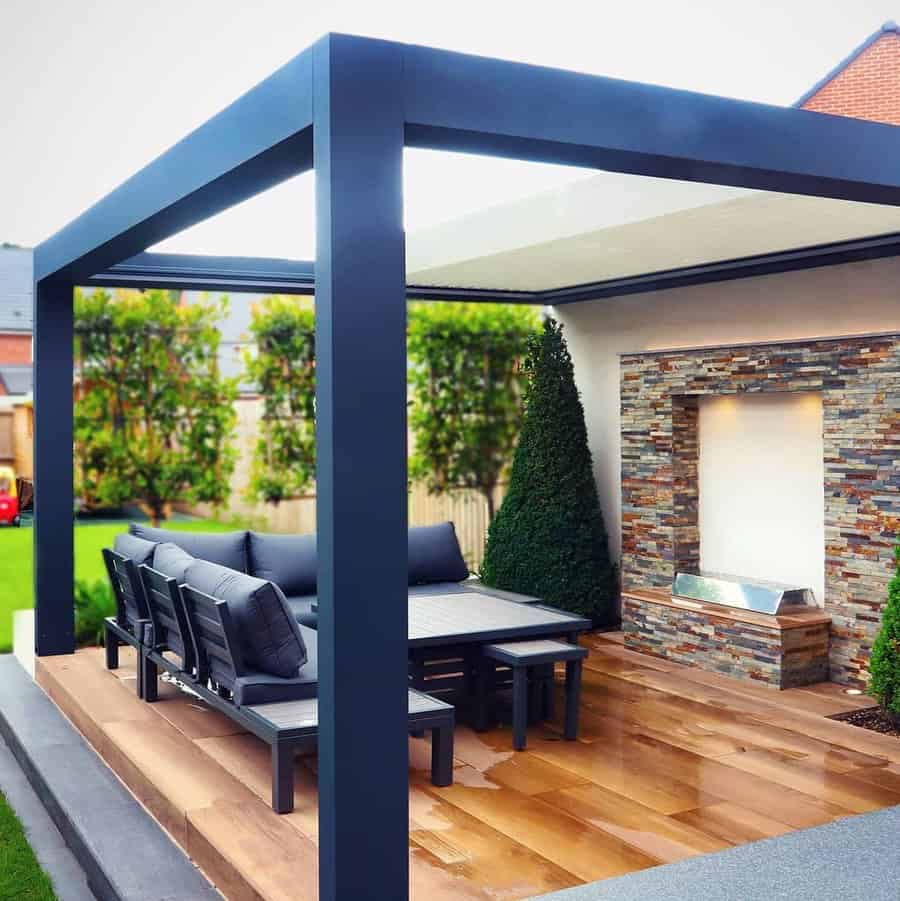
4. Contemporary Flat Top Pavilion
Embrace the beauty of simplicity with a contemporary flat-top pavilion. Its clean lines and uncluttered design offer a modern twist to traditional backyard structures. This style works beautifully in urban and suburban settings alike, providing a versatile space for entertainment or relaxation. Accentuate with minimalistic furniture and subtle lighting for a chic, sophisticated look.
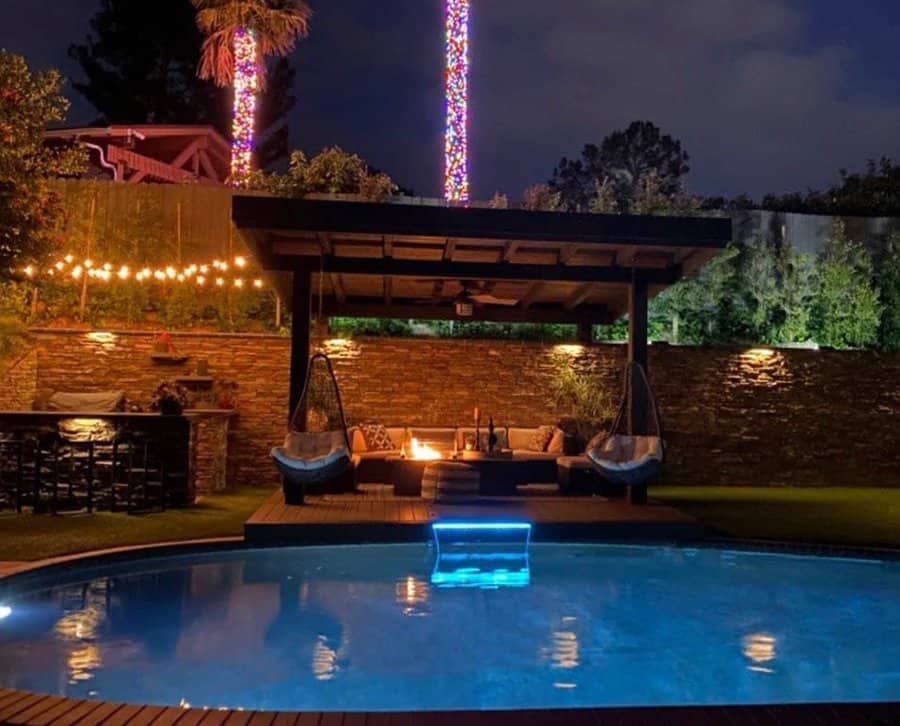
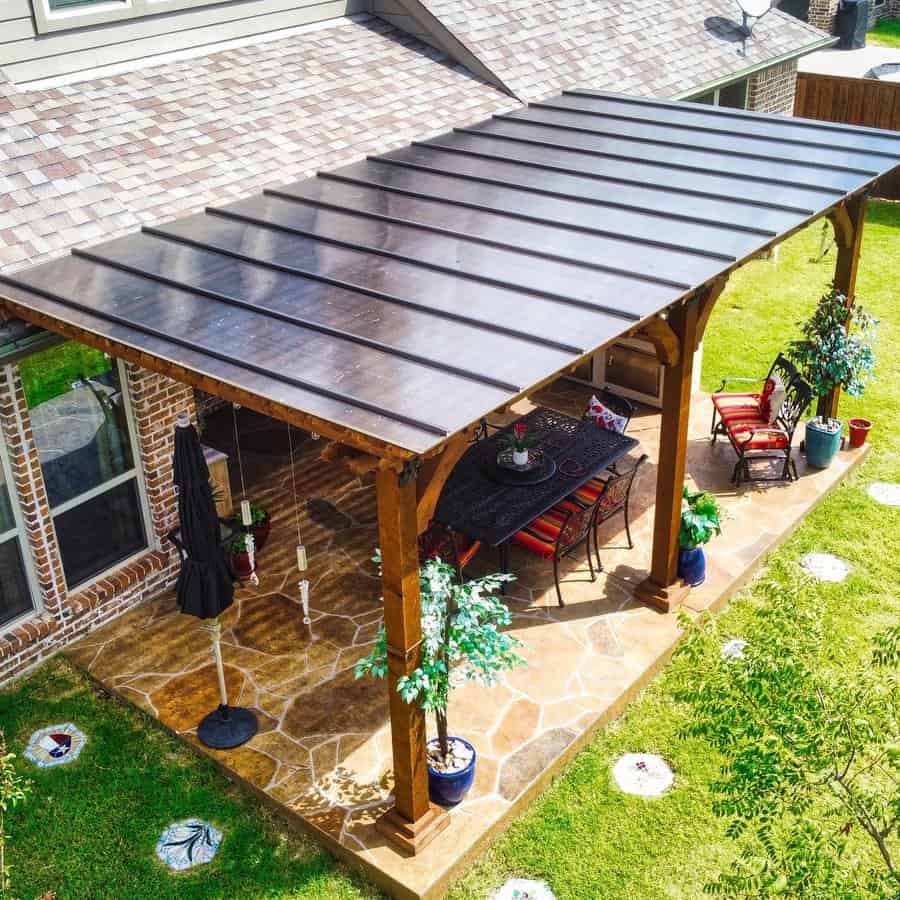
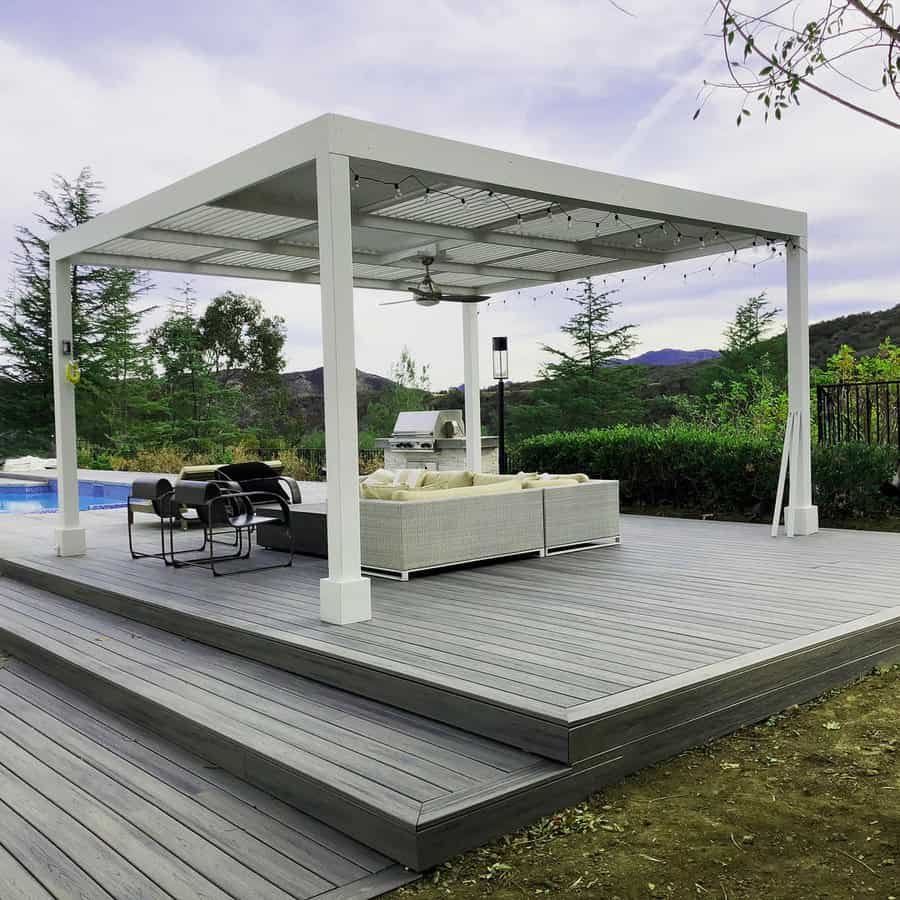
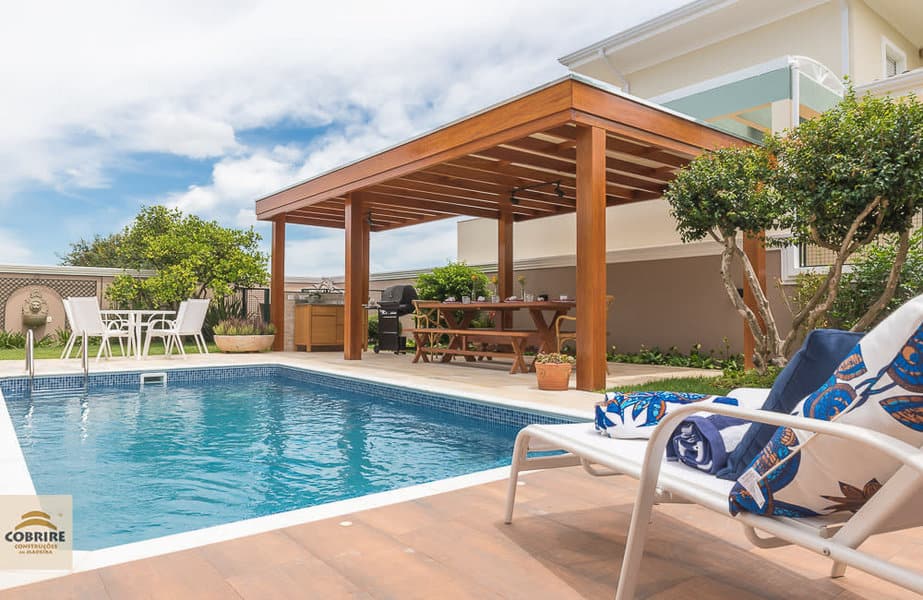
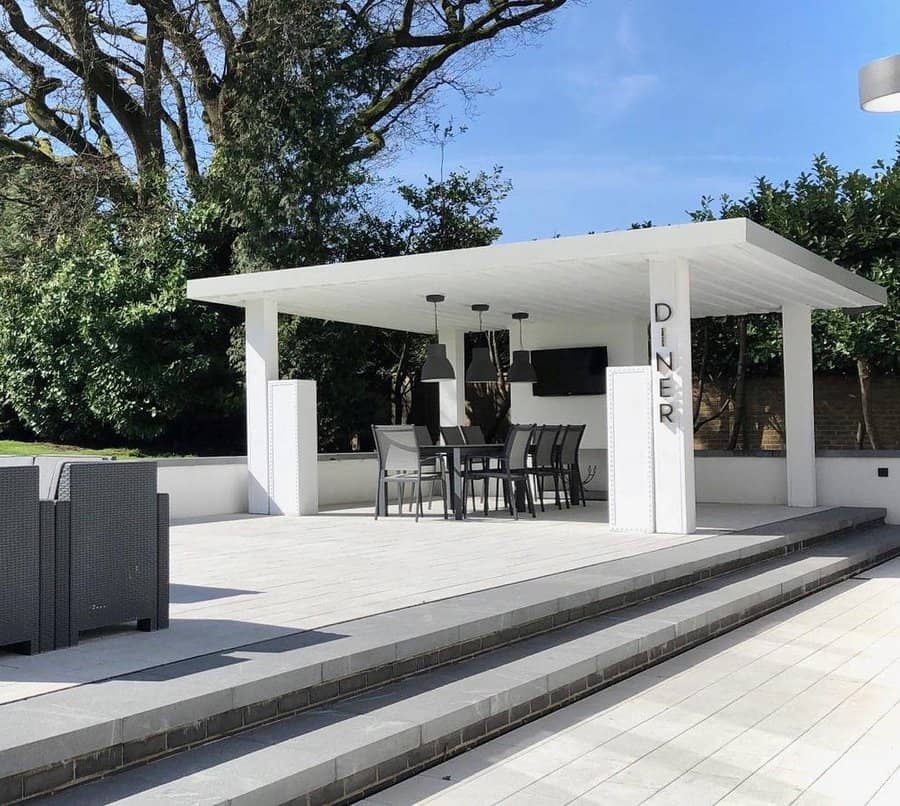
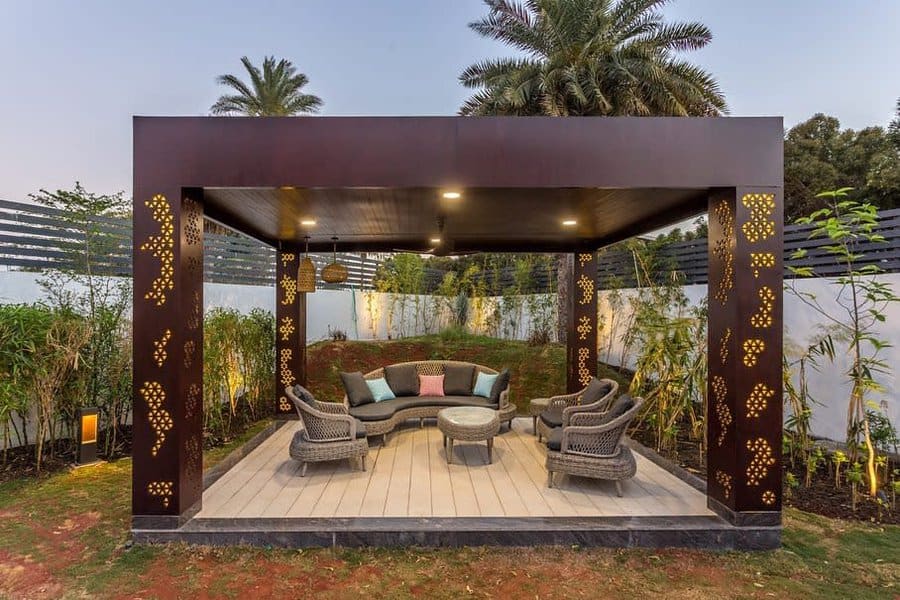
5. Barn-Style Wooden Pavilion
For a rustic charm, consider a barn-style wooden pavilion. This design evokes a sense of warmth and coziness, making it ideal for larger backyards. The use of natural wood, possibly with a weathered finish, adds character and blends seamlessly with outdoor surroundings. It’s perfect for hosting family gatherings or simply enjoying a quiet evening amidst nature.
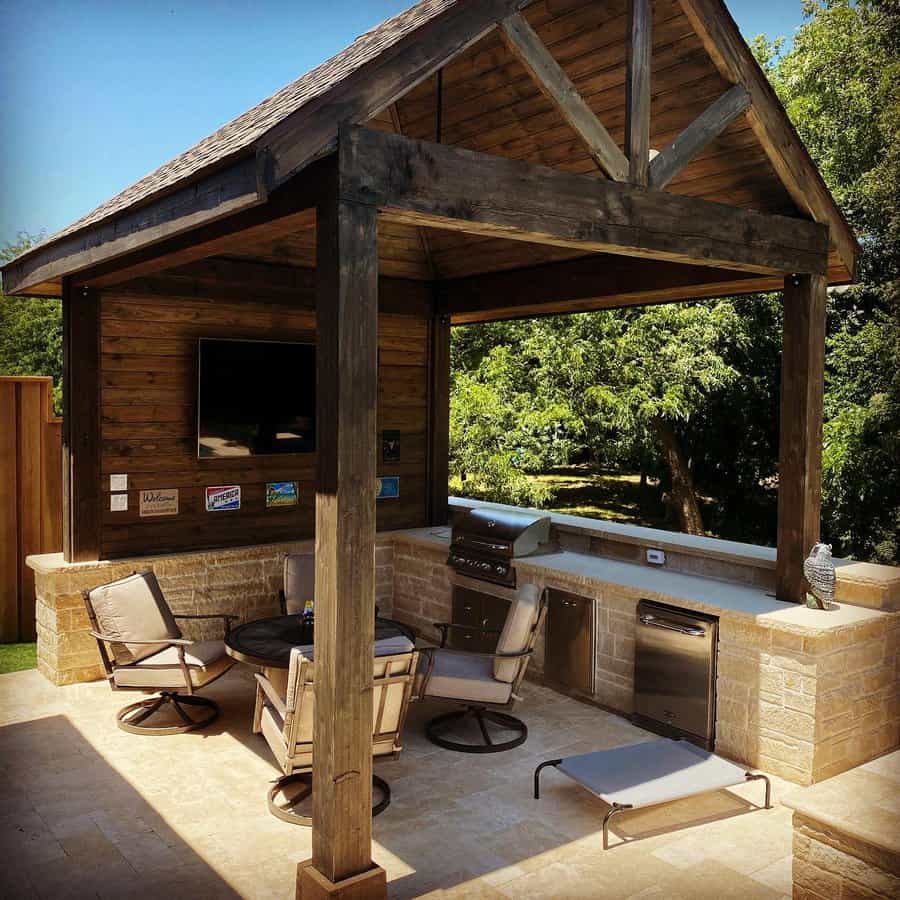
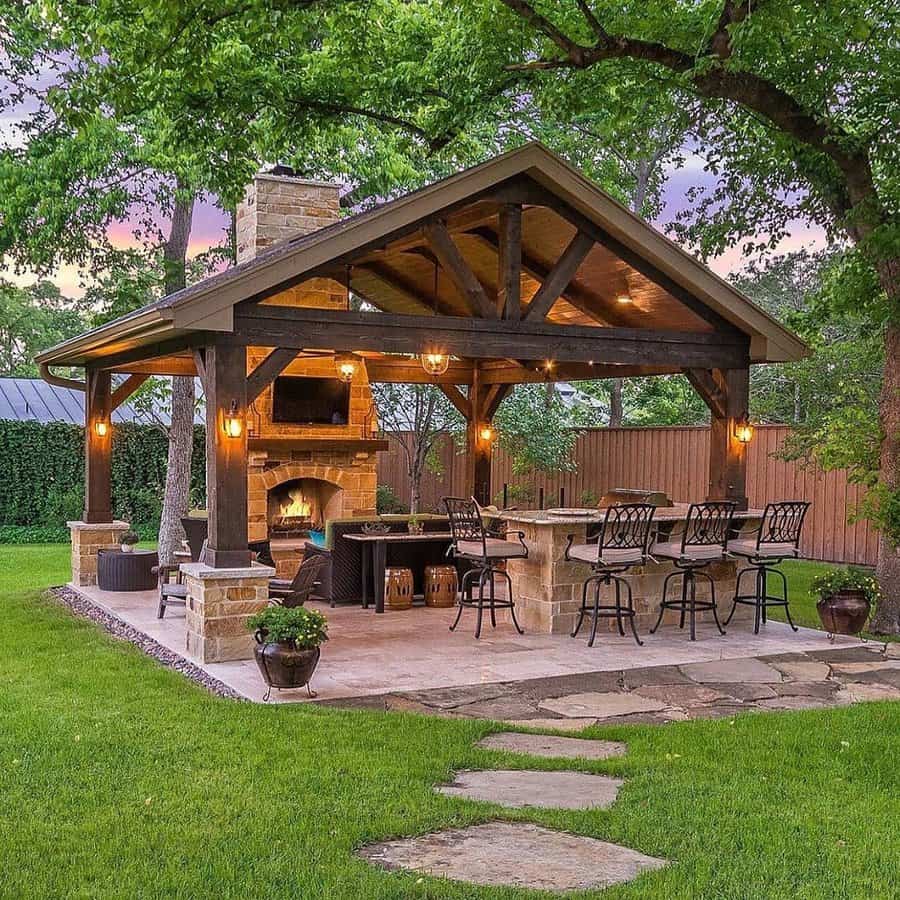
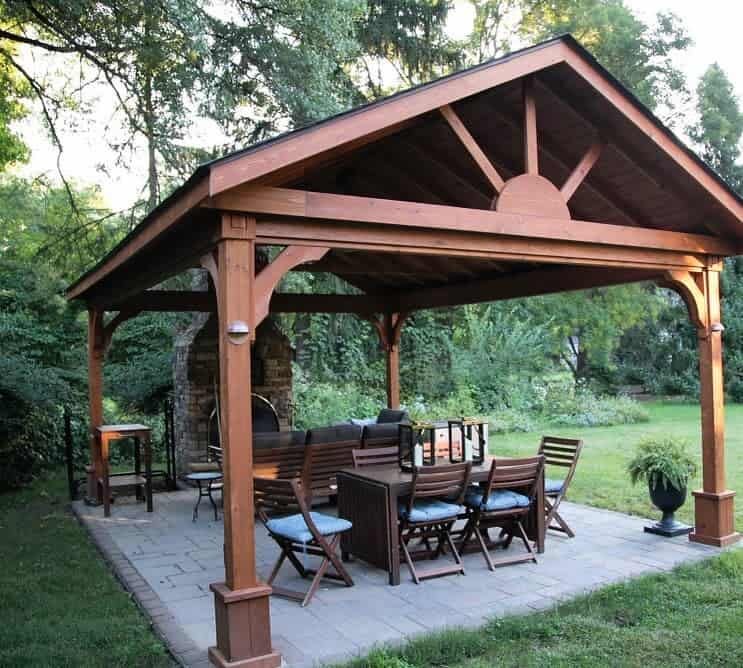
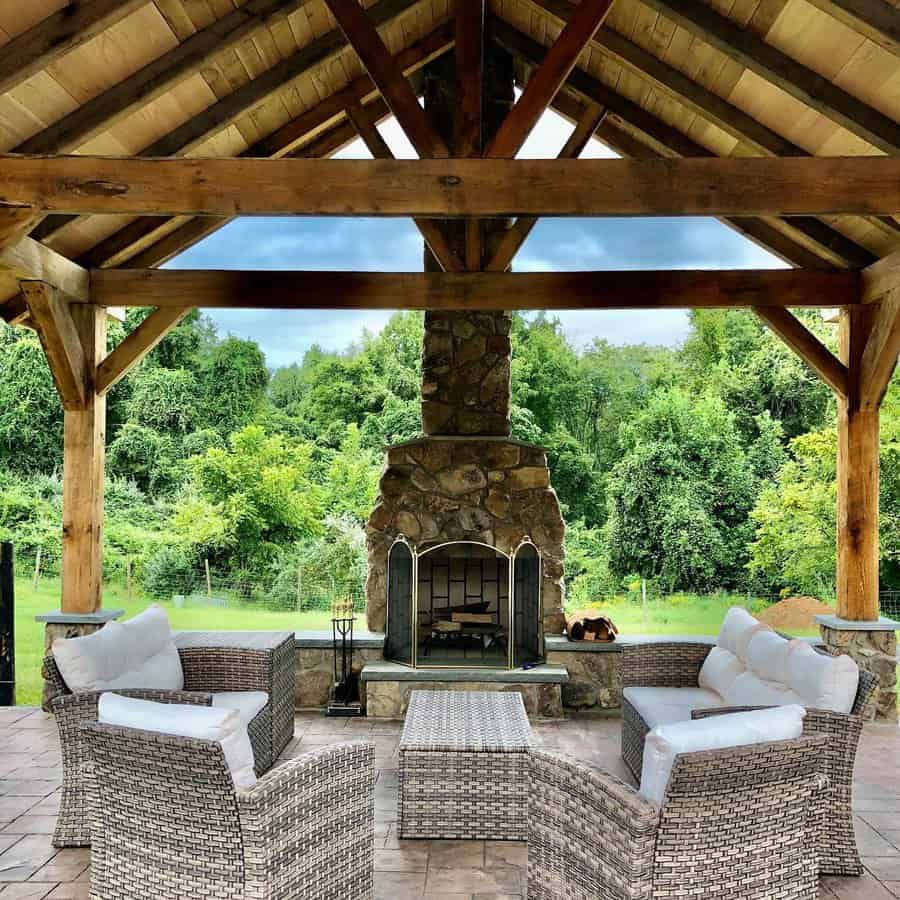
6. Traditional Bungalow Pavilion
A traditional bungalow pavilion brings a timeless elegance to your backyard. With its classic design and cozy feel, this pavilion is a nod to old-world charm. Opt for natural materials like wood or stone, and consider a shingled roof for added authenticity. This style is particularly suited for homes with traditional architecture, creating a harmonious outdoor space.
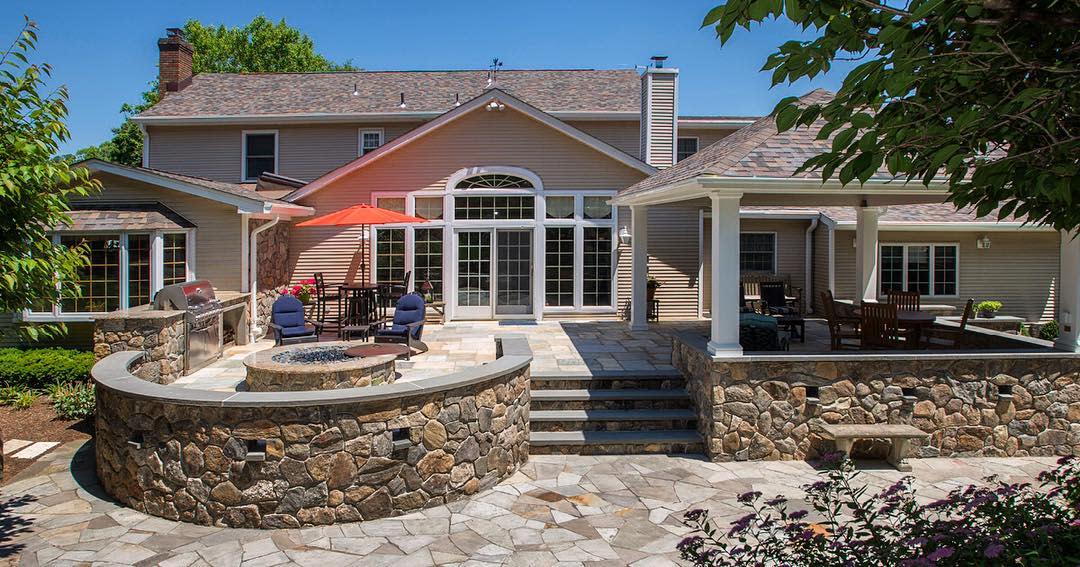
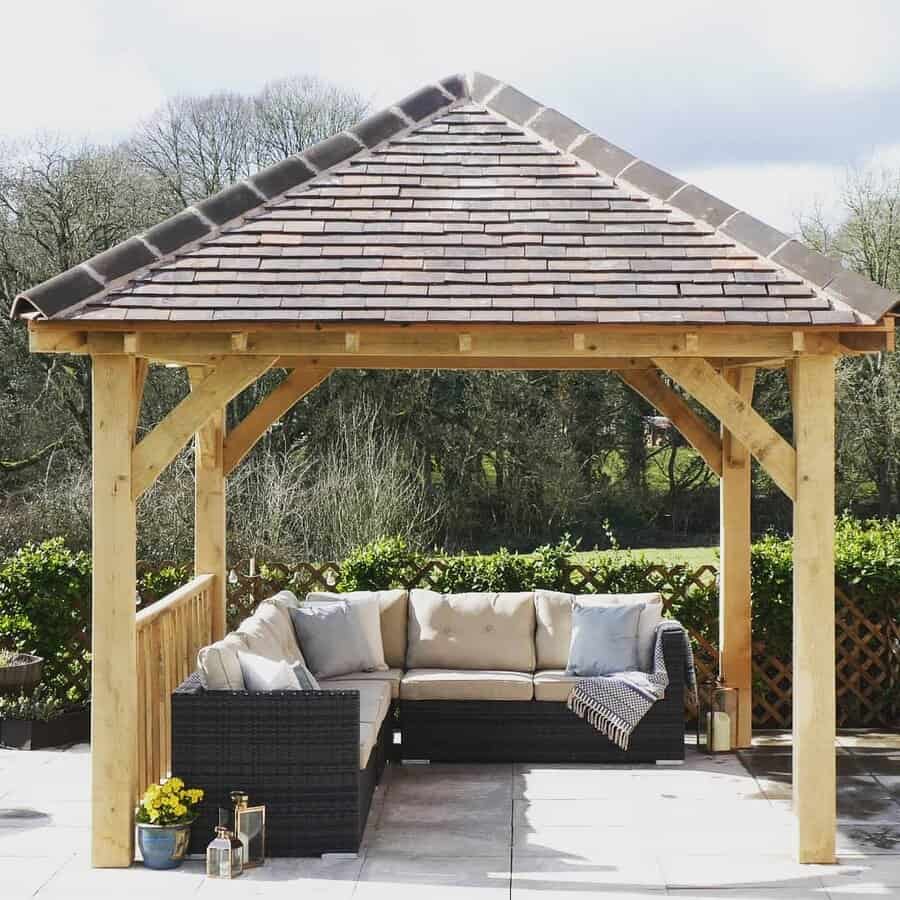
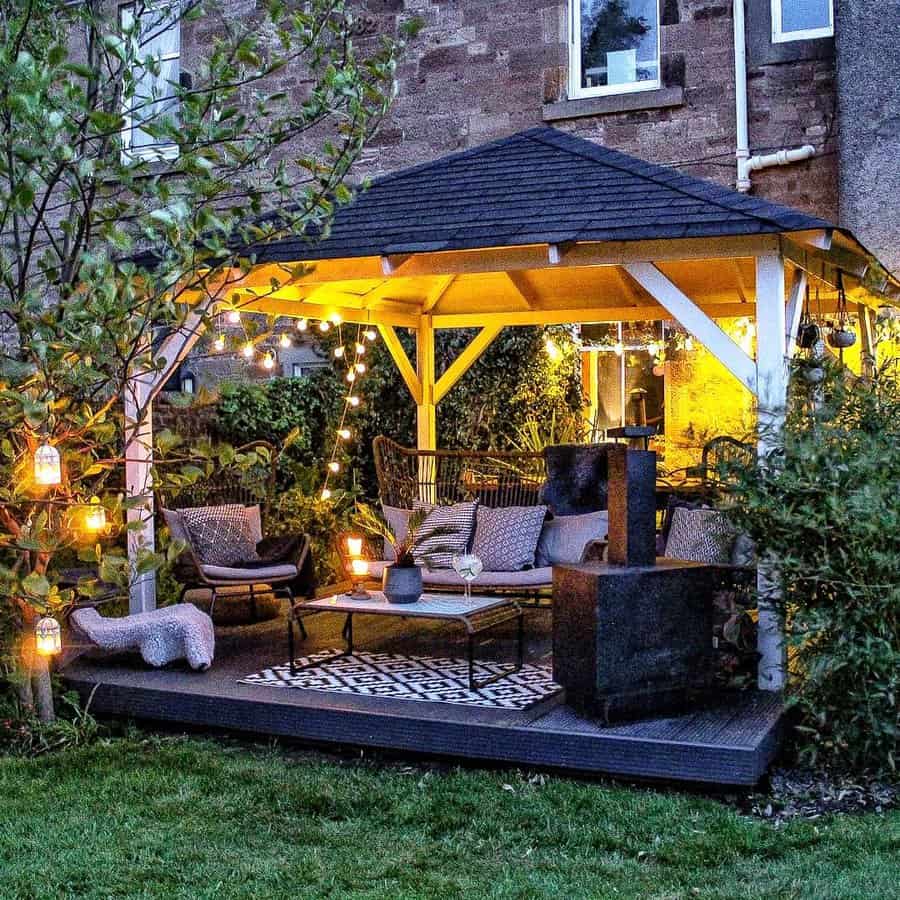
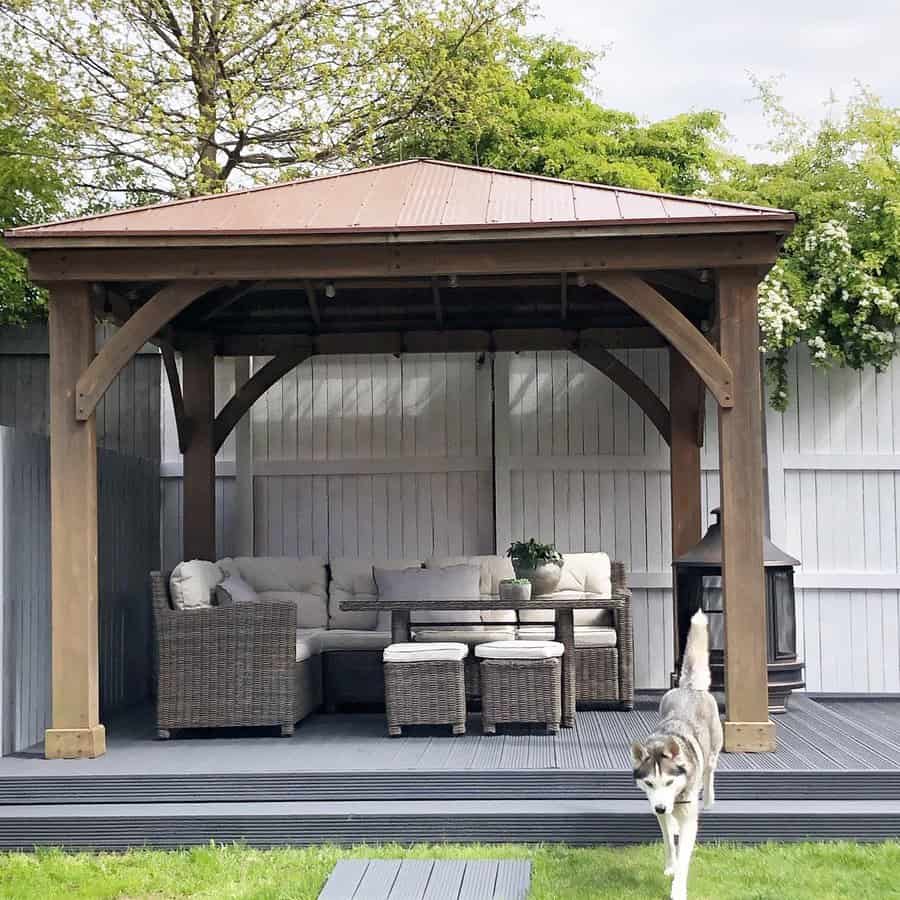
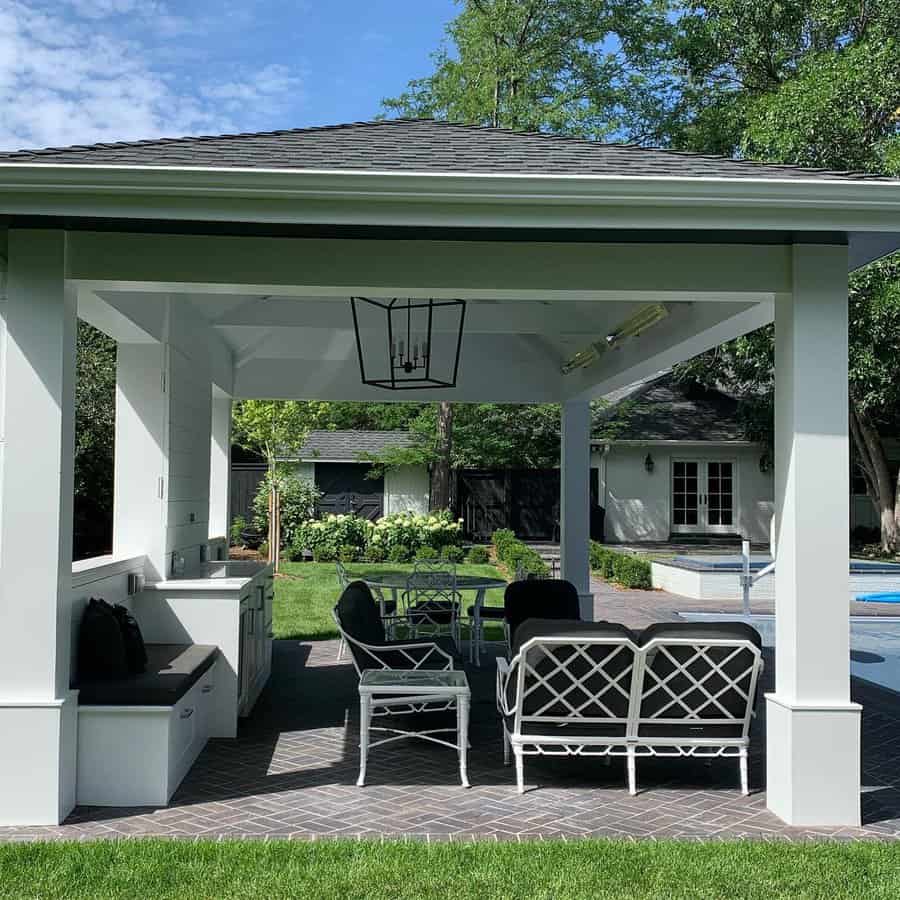
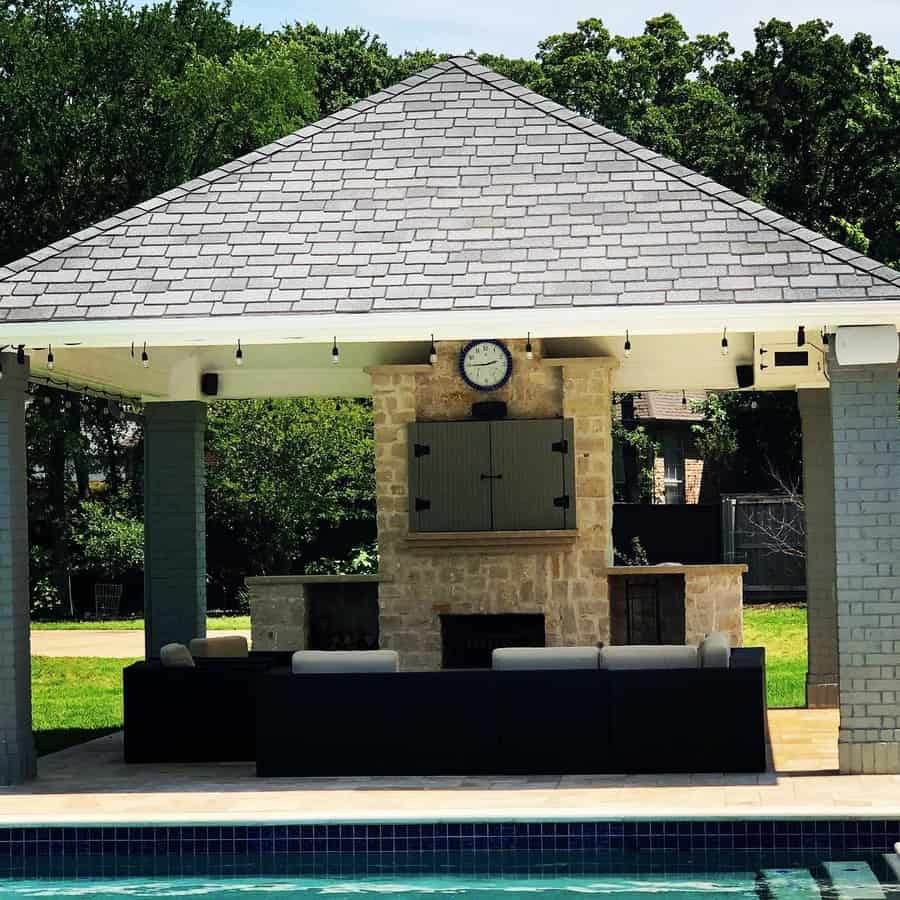
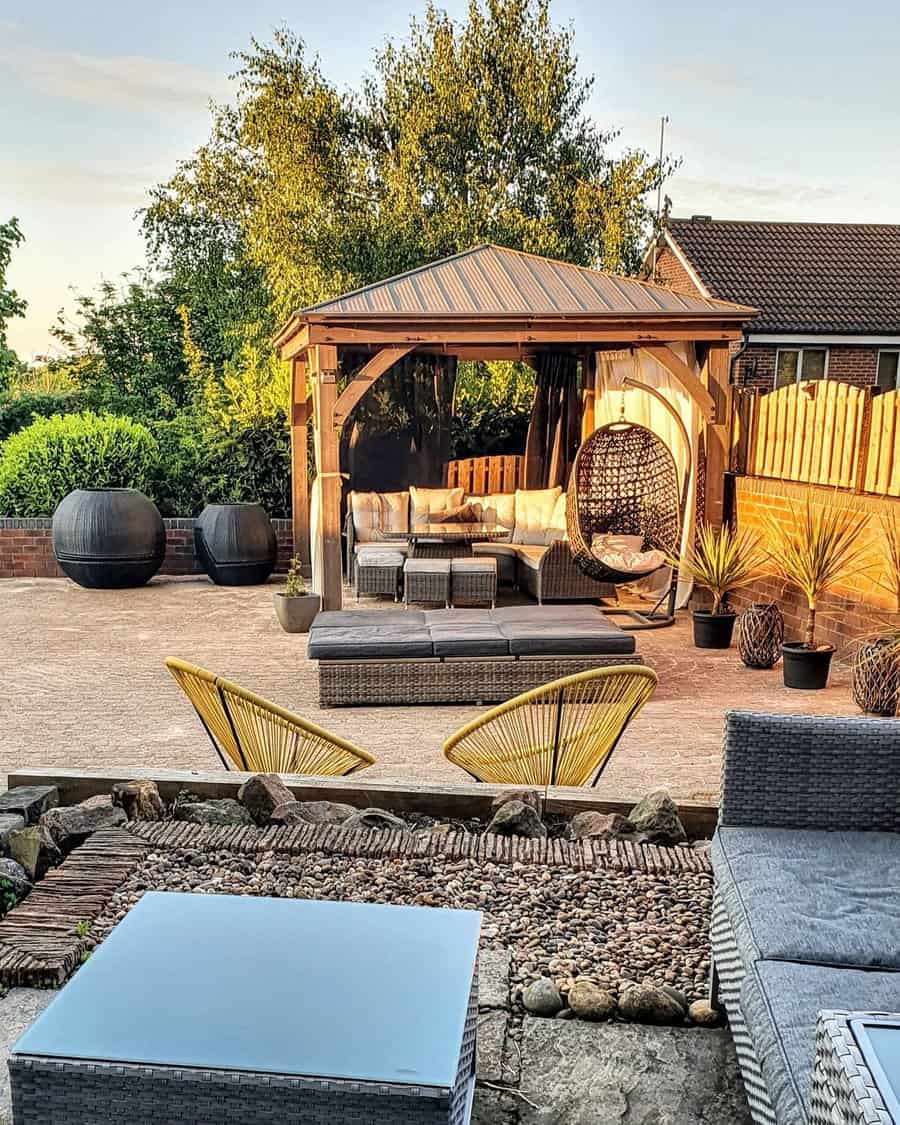
7. Backyard Pavilion With String Lights
Illuminate your evenings with a backyard pavilion adorned with string lights. This enchanting setup transforms your outdoor space into a magical setting, perfect for nighttime entertaining or relaxation. The soft glow of the lights creates a warm, inviting atmosphere, making it an ideal choice for those who love to entertain or simply enjoy the beauty of their garden at night.
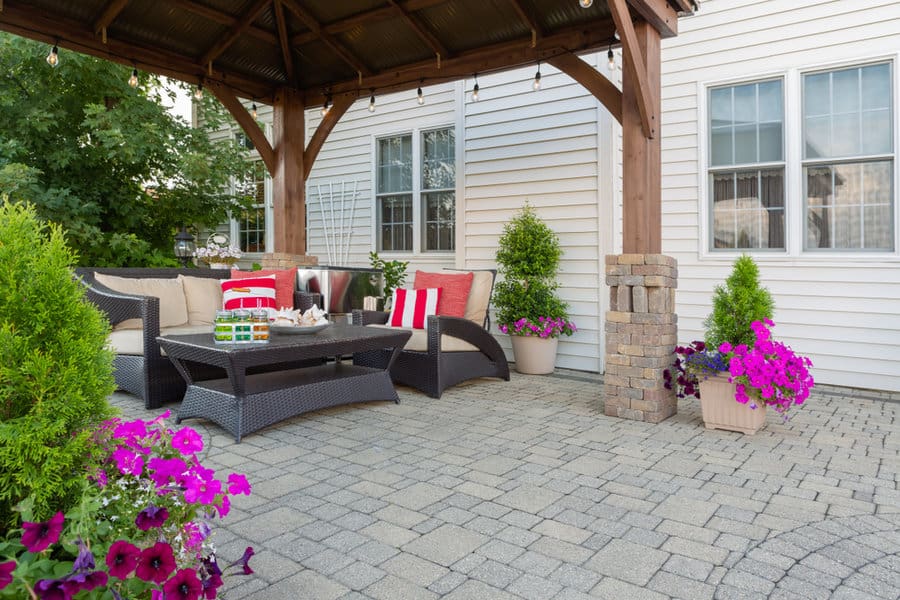
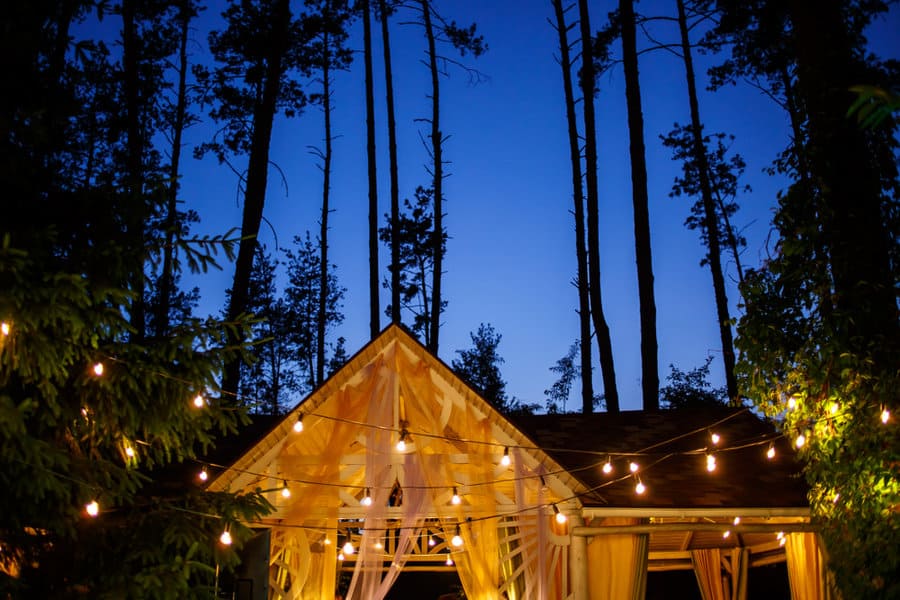
8. Cantilever Pavilion
A cantilever pavilion is a striking, architecturally interesting option for your backyard. With its overhanging structure, it provides ample shade and a unique visual element. This type of pavilion is perfect for modern landscapes, offering a dynamic look that defies traditional design. Combine with sleek, angular furniture to enhance its contemporary feel.
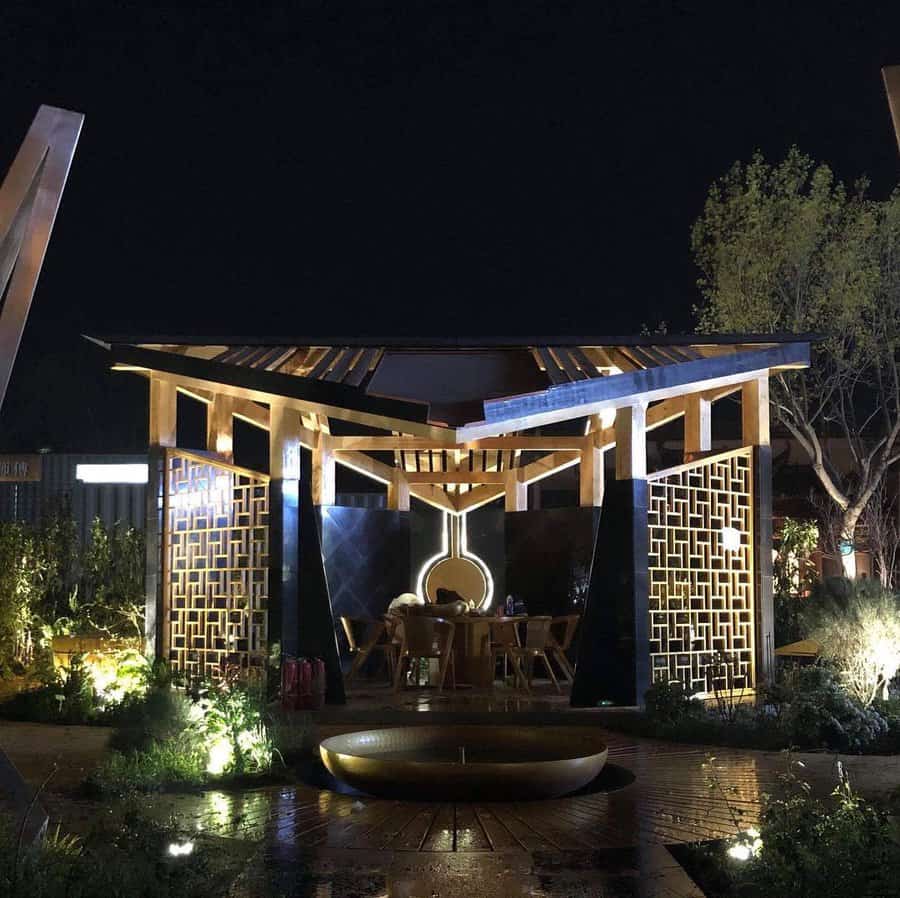
9. Pavilion With Cupola
Add a touch of elegance to your backyard with a pavilion that features a cupola. This classic architectural element not only enhances the pavilion’s aesthetic appeal but also allows for additional ventilation and natural light. A cupola-topped pavilion suits a variety of styles, from traditional to more contemporary designs, and provides a charming focal point in your outdoor space.
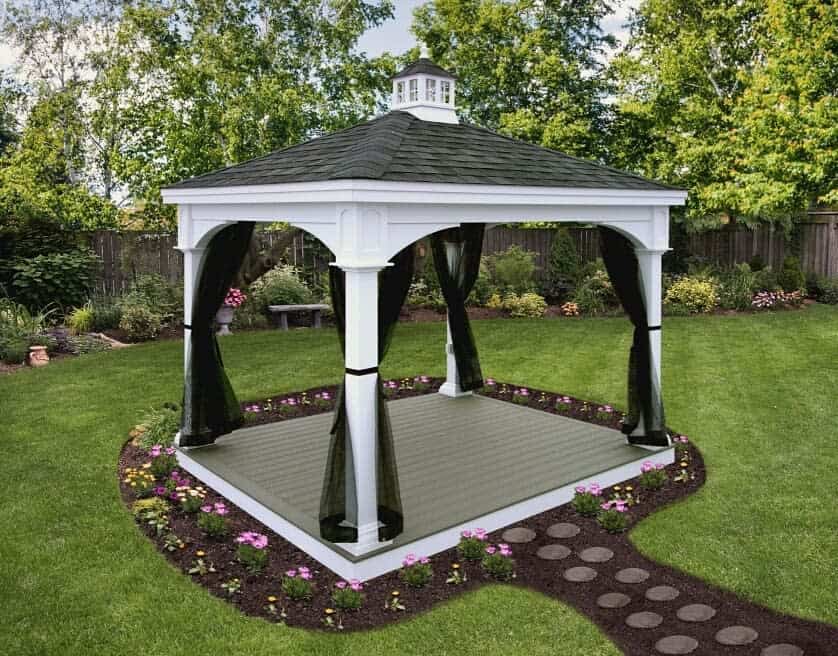
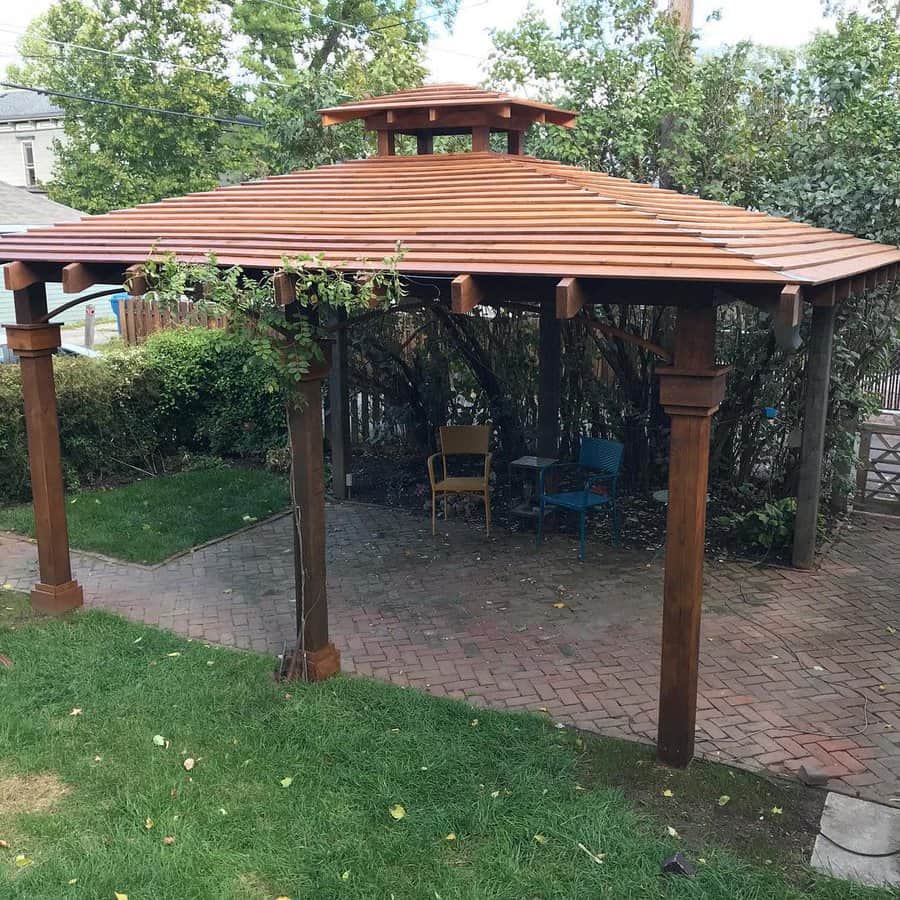
What is a good size pavilion?
A good size for your pavilion is 10×14 feet. It’s a small enough size for the majority of backyards. It can also be built off of an existing deck or patio. If you have a larger backyard, then you can increase the size to suit the available space.
What can you do in a pavilion?
You can do almost anything in a pavilion. Turn yours into an outdoor living room, meeting area, theater, seating area, outdoor bar, or sports area. The covered roof gives the area underneath plenty of protection, so you can do more in the pavilion than what you would be able to do in other outdoor structures.
What is the difference between pergola and pavilion?
A pergola has an open roof, with only beams overhead. A pavilion has a solid roof. Neither has walls, allowing for open airflow through the structure. The covered aspect of a pavilion will give you more protection from the sun and rain.
